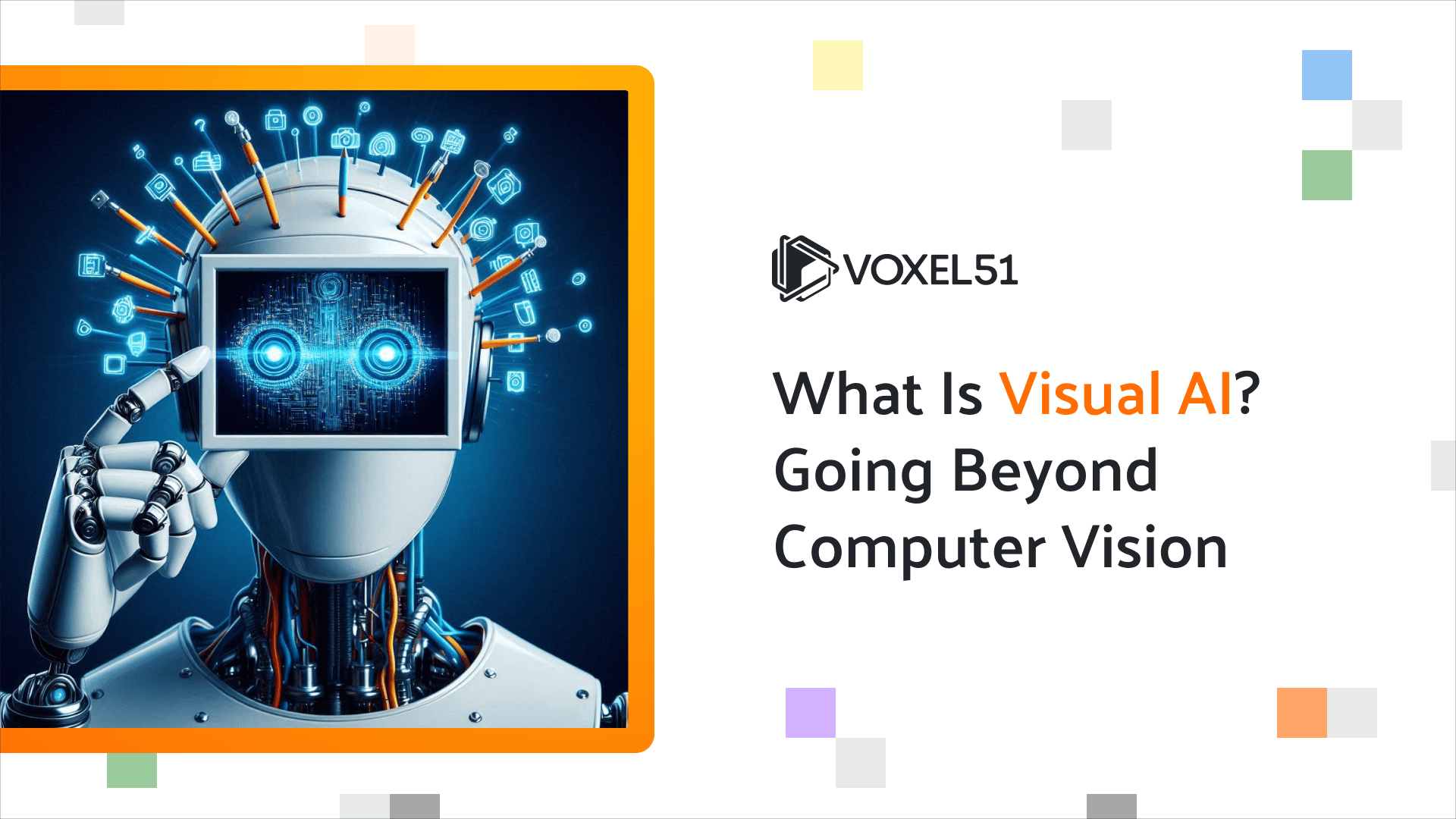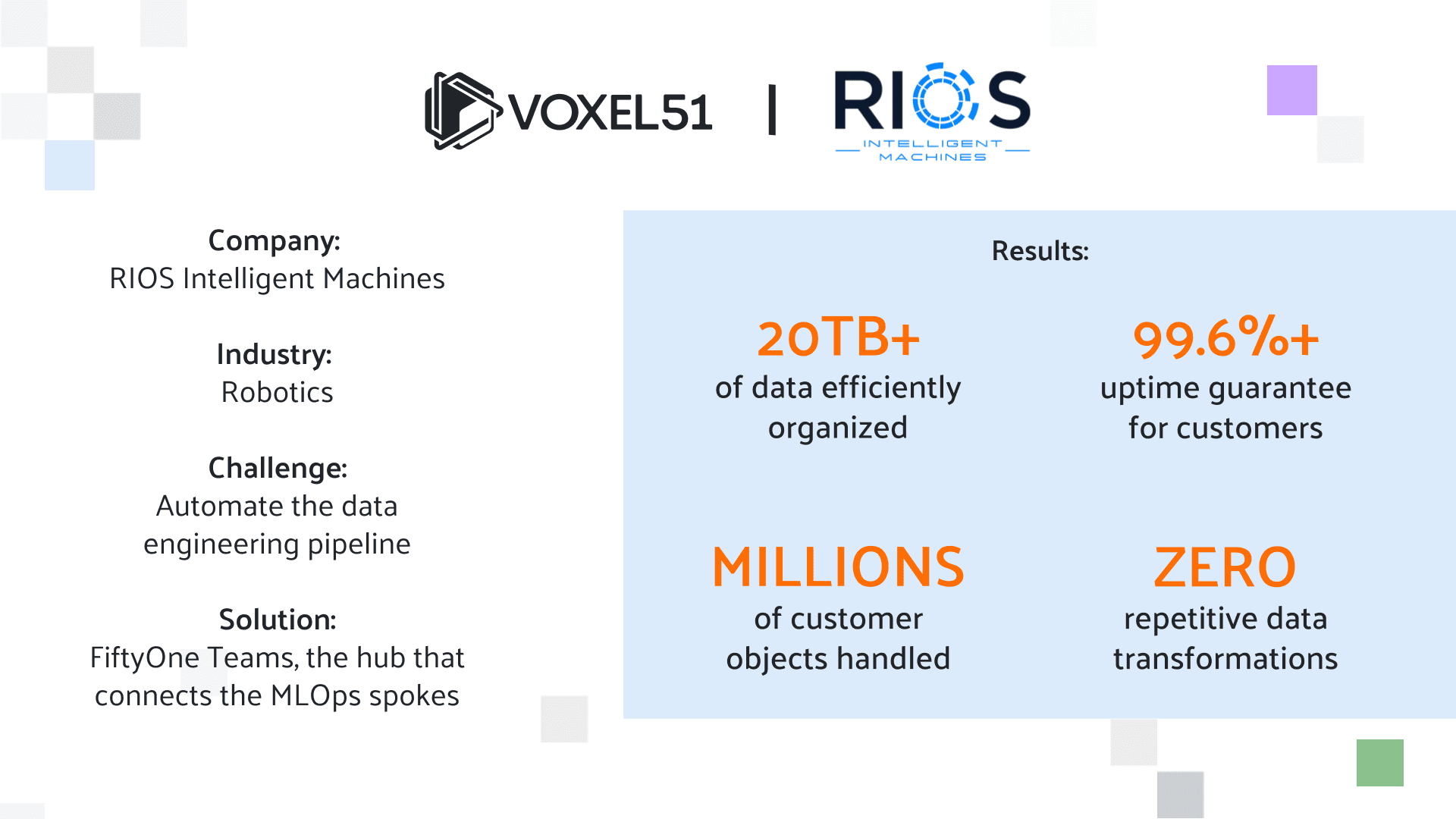AI for Predictive Maintenance Using Computer Vision
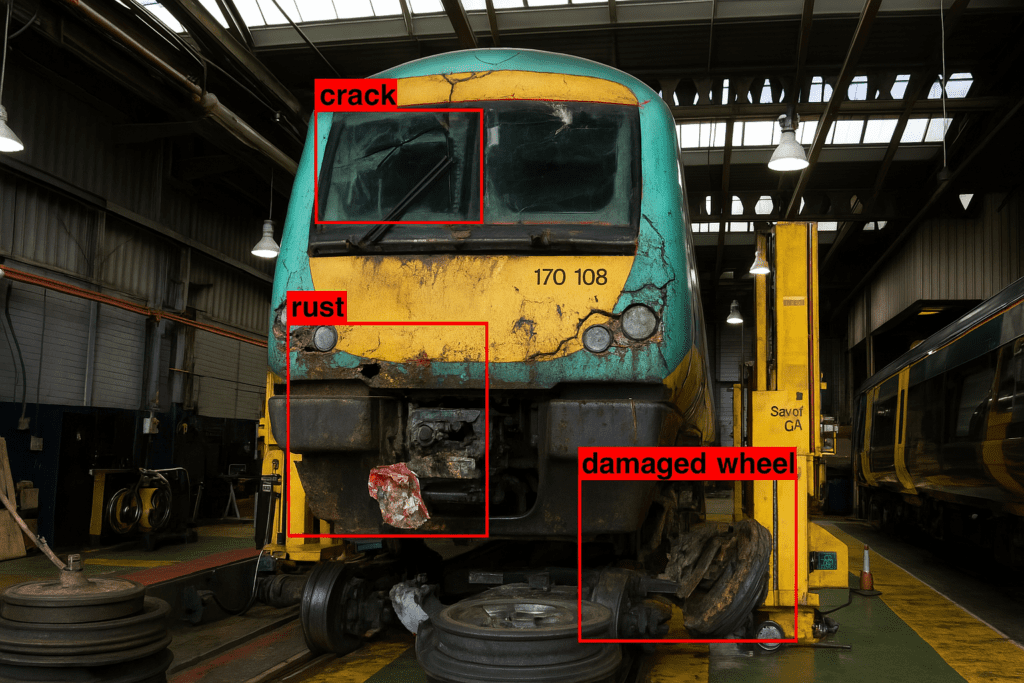
Predictive maintenance is quickly gaining traction across industries like manufacturing, energy, and transportation due to its ability to optimize maintenance schedules and prevent unexpected equipment failures. Unlike traditional methods that depend on fixed intervals or reactive responses, AI-powered predictive maintenance uses machine learning and computer vision to identify issues before they disrupt operations. This article explores how advanced computer vision techniques and strong data practices in combination with FiftyOne are reshaping maintenance strategies.
Adoption of Predictive Maintenance

Organizations are increasingly adopting predictive maintenance to streamline schedules and reduce overall maintenance costs. By analyzing real-time operational data and visual indicators from machinery, teams can proactively detect early signs of failure. In heavy industries like oil & gas or automotive, unplanned equipment failures can cause significant downtime, revenue loss, and inflate repair expenses. As a result, AI-driven predictive maintenance continues to grow, promising lower operational expenditures, higher customer satisfaction, and improved operational efficiency.
Limitations of Traditional Methods
Historically, industries relied on traditional preventative maintenance strategies like routine inspections, vibration analysis, and scheduled maintenance intervals. While these methods prevented some major breakdowns, they often missed real-time anomalies and subtle mechanical changes preceding failures. Additionally, traditional approaches could be resource-intensive or require specialized equipment. As systems grow increasingly complex and operate at greater scales, relying solely on scheduled or reactive maintenance leaves organizations vulnerable to overlooked failure signals and delayed interventions.
Computer Vision’s Transformative Potential

Computer vision is becoming a powerful tool in AI-driven predictive maintenance. By applying AI algorithms to images or video, organizations can detect wear, misalignment, or overheating in real time. High-resolution cameras, thermal imaging, and advanced analytics reveal subtle issues like surface cracks or abnormal movements that traditional sensors might miss. This post explores advanced computer vision techniques and how they integrate with other data sources, such as vibration or temperature readings, to build more accurate predictive models.
Advanced Computer Vision Techniques for Predictive Maintenance
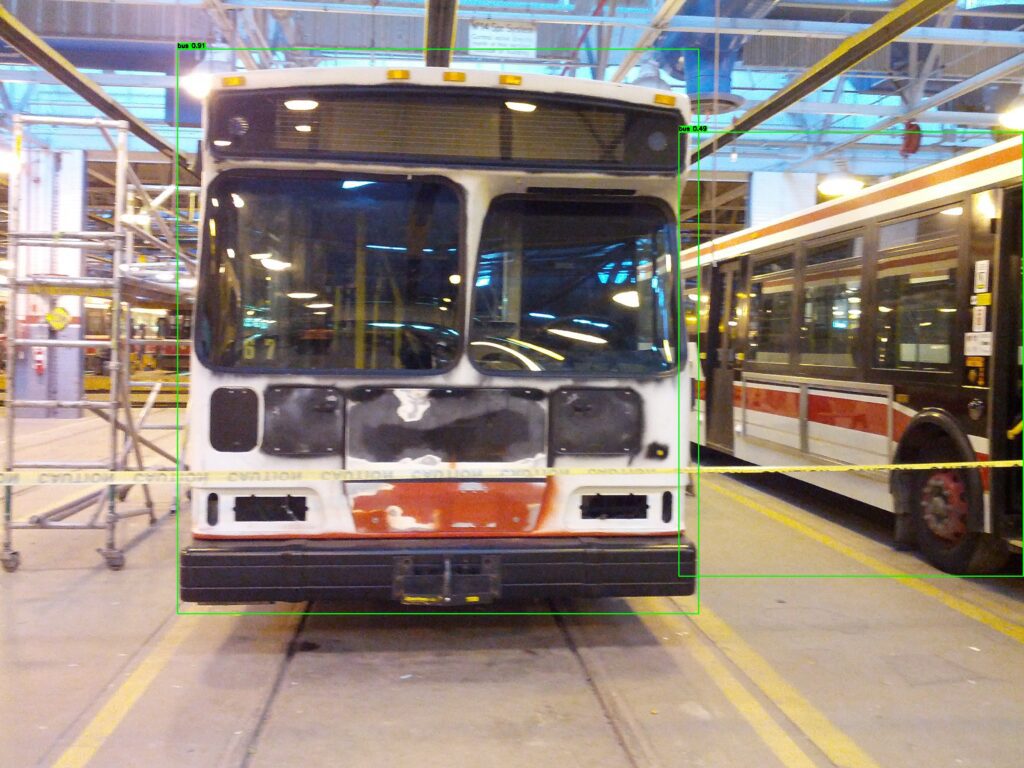
Beyond Object Detection
Traditional object detection, which uses bounding boxes to identify components, offers limited insight. It can locate parts like valves or bearings but often misses subtle changes or gradual shifts. Predictive maintenance instead requires methods that can detect abnormal patterns, minor surface defects, and early behaviors signaling potential failures.
Anomaly Detection
-
- One-Class Classification: In many industrial scenarios, there’s ample data on “normal” equipment conditions but limited examples of failures. One-class classifiers learn the expected characteristics of normal machine operations and flag anything that deviates significantly.
- Autoencoders: A popular machine learning approach for unsupervised anomaly detection. By reconstructing the input image (or sequence of images), the autoencoder indicates potential faults through high reconstruction errors. For instance, a slight fracture in a gear might not reconstruct cleanly, pointing to a possible issue.
Semantic Segmentation
Object detection is useful, but semantic segmentation offers pixel-level precision, beneficial for monitoring detailed regions such as cracks in conveyor belts or rust on gears. By categorizing images into areas like “healthy steel surface,” “corroded region,” or “lubricant residue,” maintenance teams can accurately measure degradation severity and scope. Early detection allows teams to optimize maintenance schedules or order replacements before minor defects become major failures.
Action Recognition
Some types of predictive maintenance hinge on dynamic behavior rather than static imagery. For instance, a robotic arm that moves erratically or a conveyor belt that stutters intermittently can signal underlying mechanical issues. Action recognition models analyze motion patterns across video frames, detecting deviations from normal operating states (like “smooth rotation”). Sudden jerks or abnormal frequency changes in movement can trigger alerts for further inspection.
Leveraging Temporal Information
Predicting failures effectively often requires looking beyond single snapshots:
-
- Importance of Video Sequences: Static images don’t capture evolving changes, such as heat buildup or subtle vibrations that grow over time. Video data provides context: not just what is happening, but how it changes over seconds or minutes.
- Temporal Convolutional Networks (TCNs): TCNs and related architectures excel at modeling time dependencies, offering insights into cyclical equipment behaviors. For instance, if a pump displays increasing vibration amplitude in each cycle, TCN-based anomaly detection can warn of an impending breakdown.
Integrating Sensor Data
Combining computer vision with additional sensor data, such as temperature, vibration, or pressure readings, significantly enhances predictive models by creating multi-modal datasets that reveal hidden discrepancies. For instance, a furnace showing normal temperature readings but visually indicating soot accumulation could harbor undiscovered faults. Multi-modal deep learning models that integrate visual and sensor inputs capture a broader range of failure indicators, helping detect subtle faults, like unusual motor currents in a slow-moving conveyor, more effectively than vision-only methods.
However, effectively deploying these multi-modal predictive models involves overcoming practical challenges. Organizations must navigate issues like data quality, interpretability, and scalability to ensure successful real-world implementation.
Addressing the Challenges of Implementing AI for Predictive Maintenance

Data Quality and Quantity
Despite the allure of AI in predictive maintenance, one practical hurdle is curating large, well-labeled image/video datasets covering both normal and fault states.
| Challenge | Description | Mitigation Strategies |
| Data Curation | Need for large, high-quality, well-labeled image/video datasets is a core requirement, representing both normal and fault states. | Establish standardized data collection, thorough annotation processes, and rigorous validation procedures to ensure data accuracy and consistency. |
| Impact of Poor Data | Inadequate labeling or biased data sampling significantly compromises the effectiveness of AI models. | Rigorous labeling processes (e.g., crowd-sourcing), careful data sampling strategies. |
| Data Collection Issues | Gathering consistent imagery is difficult due to varying equipment, diverse operating conditions, and proprietary data constraints across different sites. | Standardized data collection protocols where possible, targeted data capture using cameras/drones. |
| Scarcity of Fault Data | Examples of equipment failures, especially rare ones, are often hard to obtain in sufficient quantities. | Generating synthetic images of faults, using other sensor data to help identify or approximate fault conditions, actively documenting observed failures with cameras/drones. |
Model Interpretability and Explainability
Maintenance teams and plant operators often hesitate to trust opaque, black-box AI solutions, demanding explainability to confidently adopt predictive maintenance. Without clarity on why a system predicts failures, operators may revert to less accurate traditional methods. Techniques such as Grad-CAM visualization, which highlights critical image regions indicating faults, and SHAP, which quantifies individual feature contributions, provide the necessary transparency to build trust in AI-driven processes.
Deployment and Scalability
Even when a predictive model performs well in the lab, deployment can involve real-world integration challenges.
-
- Real-World Challenges: Legacy infrastructure in factories and oil rigs complicates software integration; data pipelines must manage noise, missing frames, or sensor failures.
- Edge Computing vs. Cloud Solutions: Edge computing offers real-time analysis but requires device-level deployment; cloud solutions centralize data but involve latency, bandwidth, and maintenance trade-offs.
The Role of FiftyOne in Accelerating AI for Predictive Maintenance
FiftyOne provides powerful tools for data exploration, augmentation, and model evaluation in computer vision, making it ideal for predictive maintenance applications. Here’s how:
Data Exploration and Visualization
FiftyOne’s user-friendly interface simplifies:
-
- Dataset Inspection: Large volumes of industrial images and videos can be quickly sorted, filtered, and previewed. This helps teams spot anomalies or identify camera alignment issues.
- Interactive Analysis: Maintenance engineers can drill down into clusters of images representing different faults, rapidly verifying whether they’re correctly labeled or if new labels are needed.
Data Curation and Augmentation
Predictive models require robust datasets, involving efficient labeling of thousands of images, such as consistently annotating cracked turbine blades, and applying augmentation techniques like rotation, flipping, or noise addition. These processes help models handle variations in lighting, angle, or occlusion, enhancing their resilience and accuracy.
Model Development and Evaluation
The platform also streamlines the model development cycle:
-
- Data Loading and Preprocessing: Efficiently import large volumes of factory-floor imagery, organize them by timestamp or device ID, and create training splits.
- Model Predictions Visualization: Visual overlays of predicted anomalies, like bounding boxes, enable quick iteration. Maintenance staff can rapidly identify misclassifications and provide immediate feedback, streamlining data annotation and model improvement.
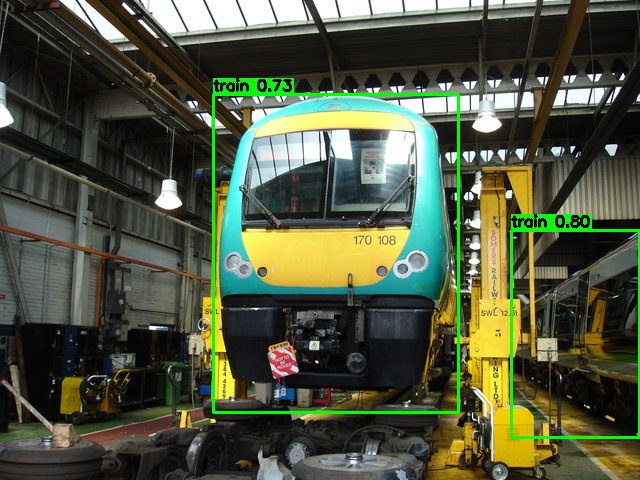
Make Downtime a Thing of the Past
Organizations looking to improve predictive maintenance should explore advanced computer vision techniques, whether developing solutions in-house or leveraging specialized predictive maintenance services. Tools like FiftyOne support rapid iteration, streamlined dataset refinement, and improved analysis of model outputs, enabling more effective real-time maintenance regardless of the implementation path. For data scientists, engineers, and maintenance managers, adopting AI-driven predictive maintenance is a strategic investment in reliability and efficiency, helping machinery stay ahead of unexpected failures.
Image Citations
-
- Snelson, Brian. Final assembly 3. Photograph. September 14, 2008. Wikimedia Commons. CC BY 2.0.
https://commons.wikimedia.org/wiki/File:Final_assembly_3.jpg - Elliot, Raul (Sgt., U.S. Army). Factory truck parks at the loading dock, Iraq in 2003. Photograph. September 13, 2003. Wikimedia Commons. Public domain.
https://commons.wikimedia.org/wiki/File:Factory_truck_parks_at_the_loading_dock,_Iraq_in_2003.jpeg - 분당선M. 20131123 TTC repair bus. Photograph. November 23, 2013. Wikimedia Commons. CC BY-SA 3.0.
https://commons.wikimedia.org/wiki/File:20131123_TTC_repair_bus.jpg - Gobierno de Castilla-La Mancha. 2021-12-10 – Visita a las instalaciones de la bodega ‘Jesús del Perdón’. Photograph. December 10, 2021. Wikimedia Commons. CC BY-SA 2.0.
https://commons.wikimedia.org/wiki/File:2021-12-10_-Visita_a_las_instalaciones_de_la_bodega%E2%80%98Jes%C3%BAs_del_Perd%C3%B3n%E2%80%99_-_51737235201.jpg - Newman, Rob. Train under repair, Tyseley Depot. Photograph. June 28, 2008. Wikimedia Commons. CC BY-SA 2.0.
https://commons.wikimedia.org/wiki/File:Train_under_repair,Tyseley_Depot-geograph.org.uk-_2347616.jpg
- Snelson, Brian. Final assembly 3. Photograph. September 14, 2008. Wikimedia Commons. CC BY 2.0.
